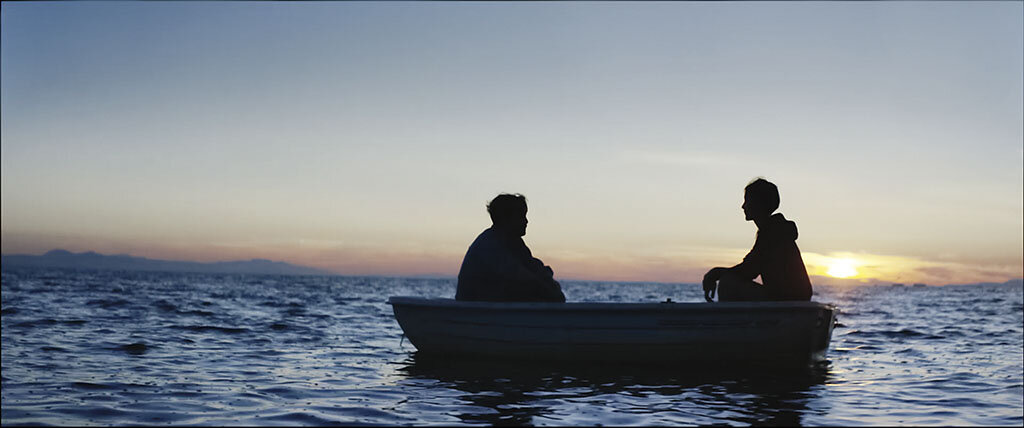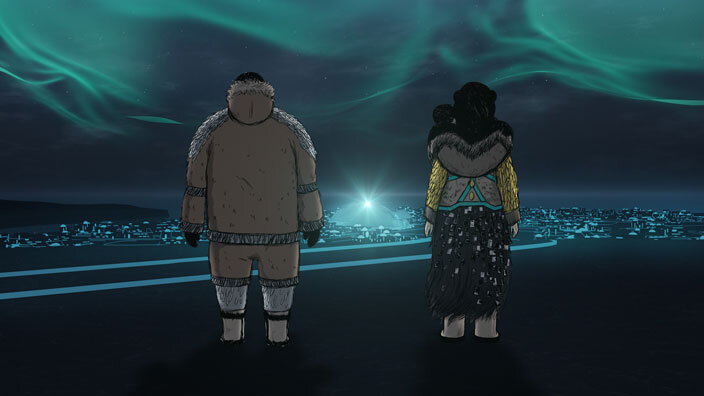Our first film program focused on works by Indigenous contemporary artists and filmmakers.
February 17 - 24, 2021
Bihttoš (Rebel)
by Elle-Máijá Tailfeathers
Canada/Norway, 2014, 14mins, English and North Sami
Mixing archival footage, re-enactments and animation, Elle-Maija Tailfeathers documentary Bihttoš (Rebel) explores how past injustices impacted the marriage of her mother, who is of Blackfoot descent, and her Sami father.
12/Make It Right
from the exhibition, Incomplete Drawings of Decolonization
by Anna Tsouhlarakis
USA, 2020, 5 mins, no dialogue
The title 12/Make It Right is a nod to the conceptual titling Sol LeWitt used in his pieces. In 12/Make It Right, Tsouhlarakis use 12 pieces of IKEA remnants (a cube is made up of 12 edges, or lines). "Make It Right" is a phrase her Navajo grandmother always used when talking and teaching about Navajo beliefs. For the complete information on this piece, click here.
Mensagens da Terra
by Maria Pankararu, Sebastian Gerlic and Ângelo Rosário
Brazil, 2020, 13 min 41, Portuguese with English subtitles
This documentary compiles the reflections and views of four Indigenous men and women from the Tupinambá Hāhāhāe, Pankararu, Kariri-Xocó and Tupinambá ethnicities. They question what it means to be civilized and what it means to be a barbarian. Through their lived experiences, and through the memories and traumas suffered by their elders, they reflect on both the local and global realities of human coexistence with nature.
Three-thousand
by Asinnajaq
Canada, 2017, 14mins, Inuktitut and English
In this short film, Inuk artist Asinnajaq plunges us into a imaginary universe. Diving into the NFB’s vast archive, she parses the complicated cinematic representation of the Inuit, harvesting fleeting truths and fortuitous accidents from a range of sources—newsreels, propaganda, ethnographic docs, and work by Indigenous filmmakers. Embedding historic footage into original animation, she conjures up a vision of hope and possibility.
Water As Taonga is part of SAMAQAN: WATER STORIES
by Jeff Bear (Maliseet) and Marianne Jones (Haida)
Canada, 2015, 22 mins, English
Marianne Jones and Jeff Bear travel from Canada’s west coast to New Zealand where they meet with Maori leaders. The Maori explain the sacred relationship they have with water. Their migration to New Zealand in the 13th century predated that of settlers, or “infinite others” as the Maori call them, by 500 years.
TSHIUETIN
by Caroline Monnet
Canada, 2016, 10 min 47, Innu and French with English subtitles
Tshiuetin (pronounced T- shee –way- tin and translates to ‘North Wind’ in the Innu language) explores the operations of Canada’s first First Nations-owned railway line. Established in 2005, Tshiuetin Railway Inc. runs between Sept-Iles and Schefferville and serves a number of communities along the way. As the train winds its way through lighted tunnels and snowy mountainsides, the conductor of the train explains how the ways in which the railway has been a benefit to him and to the community at large.
WF Online series included four curated screening programs each giving a curatorial focus featuring Basel, Swiss and/or international productions. Each program was available for one week, accompanied when possible with interviews with the filmmakers.
February 2021 (17 - 24): Indigenous Peoples
May 2021 (12 - 19): Touching Realities
October 2021 (24 - 31): Sustainability
December 2021 (14 - 21): Video essays
This project was made possible thanks to the financial support of the Mary & Ewald E. Bertschmann-Stiftung and the Division of Cultural Affairs Basel-Stadt.








